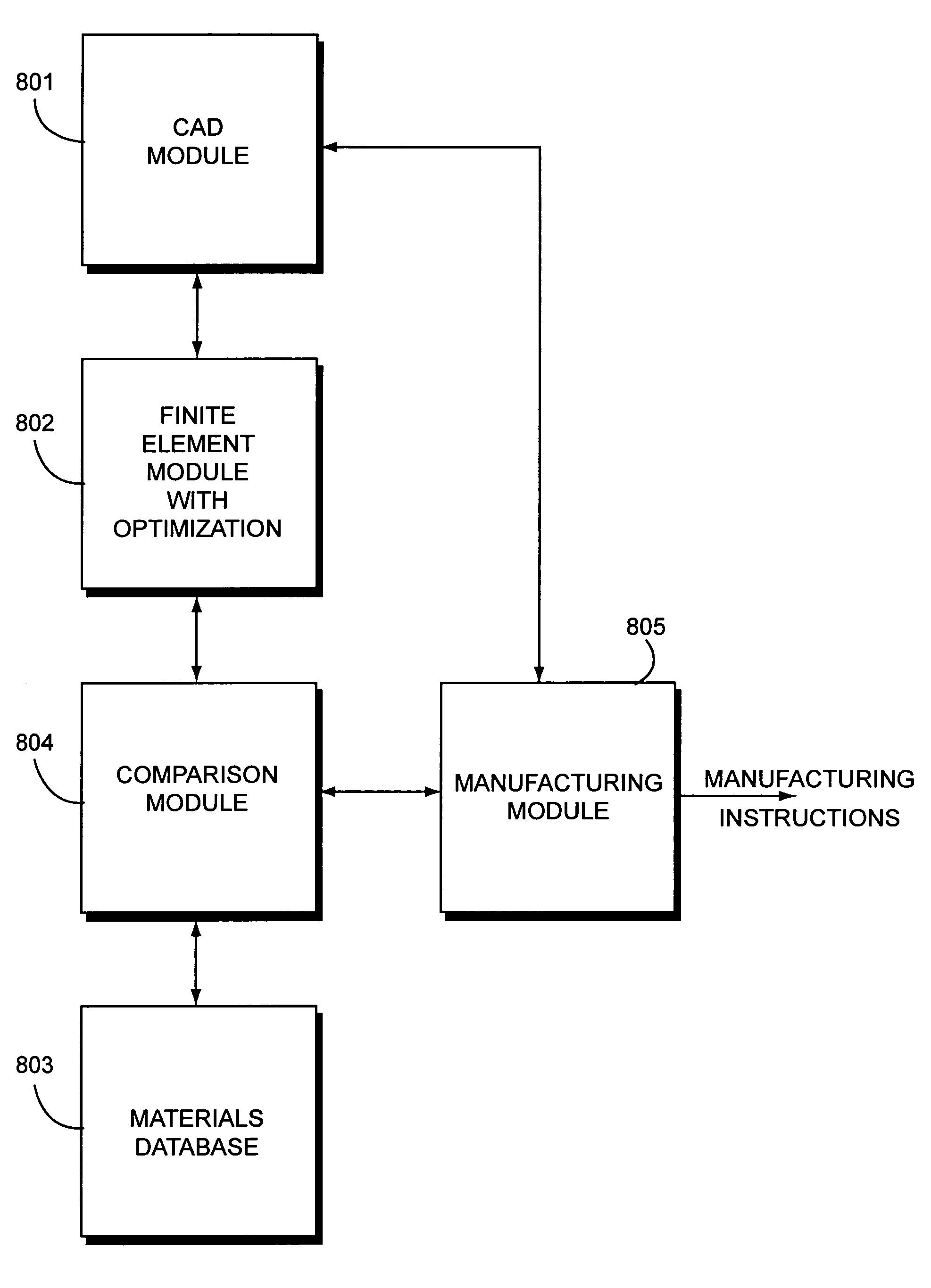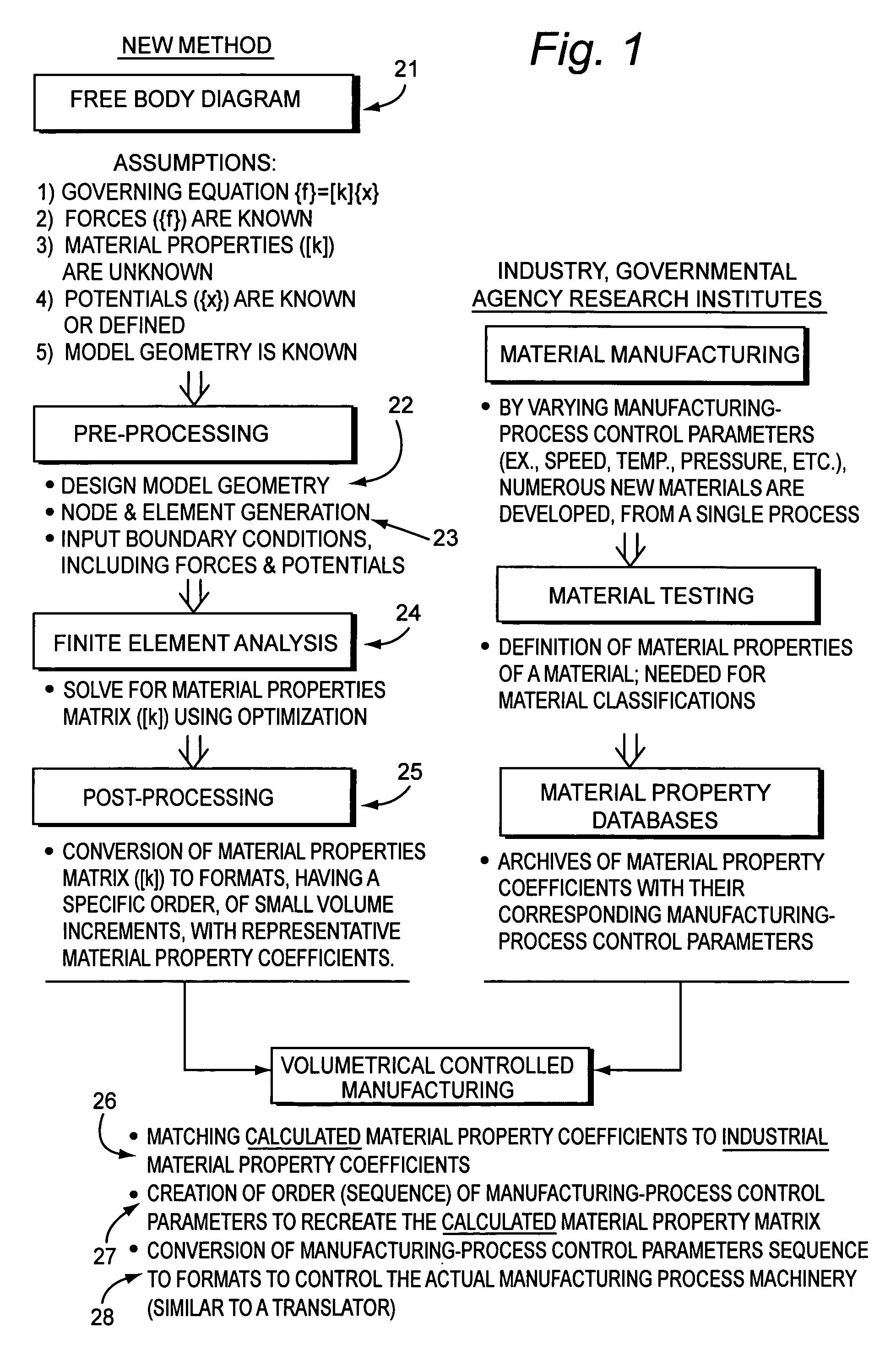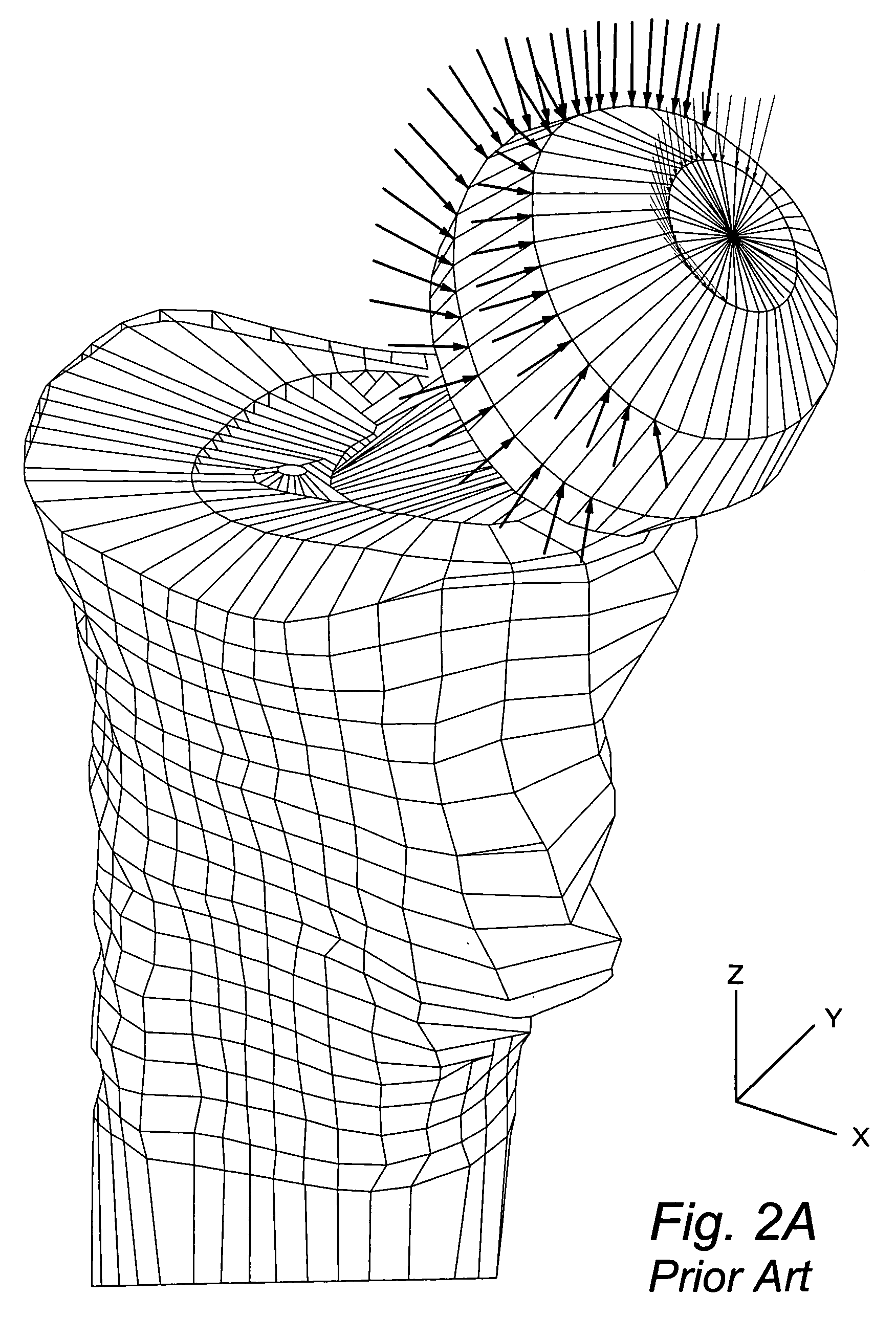Manufacturing system and method
a manufacturing system and material technology, applied in the field of manufacture of articles, can solve the problems of reducing the safety margin, reducing the manufacturability of the product, and using a configuration and material that was much stiffer, so as to achieve the effect of improving manufacturability
- Summary
- Abstract
- Description
- Claims
- Application Information
AI Technical Summary
Benefits of technology
Problems solved by technology
Method used
Image
Examples
Embodiment Construction
[0018]FIG. 1 will be used to describe a methodology for manufacturing an object or part in accordance with the present invention. As will become apparent from the description below, object or part (hereinafter “object”) as used herein refers to any object that may be manufactured by a process or technique in which manufacturing parameters may be controlled to vary constitutive or material properties within the object. The methodology for manufacturing an object in accordance with the instant invention is based on solutions of the equation
{f}=[k]{x}
where {f} represents a field that will be applied to the object in its intended use, {x} represents a potential corresponding to the applied field, and [k] represents the material properties of the object.
[0019]The methodology of the instant invention may be utilized with any manufacturing technique in which the manufacturing parameters may be varied. For example, a braiding process using a braider may be used to manufacture fiber composit...
PUM
| Property | Measurement | Unit |
|---|---|---|
| forces | aaaaa | aaaaa |
| force | aaaaa | aaaaa |
| Young's modulus | aaaaa | aaaaa |
Abstract
Description
Claims
Application Information
 Login to View More
Login to View More - R&D
- Intellectual Property
- Life Sciences
- Materials
- Tech Scout
- Unparalleled Data Quality
- Higher Quality Content
- 60% Fewer Hallucinations
Browse by: Latest US Patents, China's latest patents, Technical Efficacy Thesaurus, Application Domain, Technology Topic, Popular Technical Reports.
© 2025 PatSnap. All rights reserved.Legal|Privacy policy|Modern Slavery Act Transparency Statement|Sitemap|About US| Contact US: help@patsnap.com



